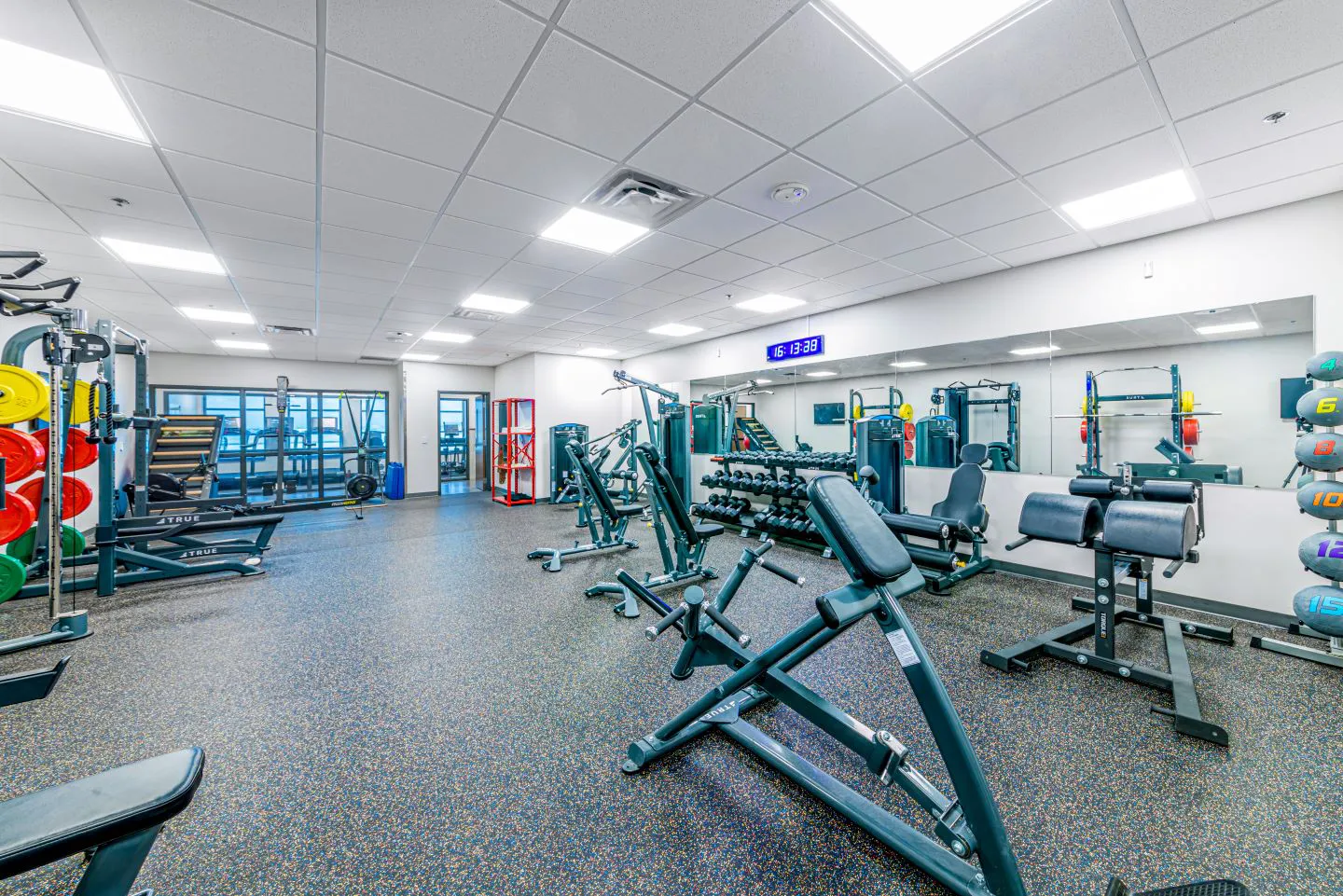Over the past few years, justice facilities across the U.S. have been experiencing overcrowding and deteriorating conditions, outdated spaces, and staff shortages that are affecting the safety and well-being of the facility’s staff and the population. To address these challenges, architectural design strategies can be implemented to existing or new facilities to aid in creating spaces that acknowledge the diverse needs and experiences of all individuals, while also creating spaces that help retain current staff and recruit new staff.
Designing for Staff Wellness, Recruiting, and Retention
As staff are one of the most critical assets to the successful operation of a justice facility, architects should design staff spaces with a focus on promoting health and wellness, including spaces for decompression and healing. Justice facility staff are exposed to stressful conditions daily, resulting in a high rate of anxiety, depression, post-traumatic stress disorder, injuries, illnesses, and burnout.
To support a healthy facility culture, it is critical to create accessible decompression and therapy spaces for staff to acknowledge their stress and create safe coping mechanisms. Acknowledging and dealing with the stress and trauma of an incident shortly after it happened can reduce the long-term effects. These spaces should feature lower lighting levels, acoustical control, and comfortable furniture for staff to relax in a calm and quiet space. Designing social and emotional spaces are important as well to help combat depression. These spaces include fitness, team-building, and break areas where individuals can have positive interactions with their peers. Lastly, creating regular access to daylight and nature is another important design element consideration. Vitamin D absorption from sunlight has benefits, including combating seasonal affective disorder and reducing heart disease, weight gain, various cancers, eye strain, and the risk for migraines caused by artificial lighting.
 We designed a comprehensive municipal facility—the Lawton Public Safety Facility—to house courts, police, a municipal jail, and a fire station for the city of Lawton in Oklahoma. The combined facility includes a fitness area which is open to all staff. Photo credit: Brent Niles.
We designed a comprehensive municipal facility—the Lawton Public Safety Facility—to house courts, police, a municipal jail, and a fire station for the city of Lawton in Oklahoma. The combined facility includes a fitness area which is open to all staff. Photo credit: Brent Niles.
Architects need to be adaptable to changing technology and aging populations in the justice system. This includes looking into past and present statistics to predict the growth rate of the facility, which can aid facility owners and architects to see which areas within the facility will need future expansion."
Cassey Franco and Katie Vondrasek
Identifying Areas Within a Facility That May Not Comply with Current Codes
Many justice facilities are experiencing outdated and deteriorating conditions. The Americans with Disabilities Act (ADA) is a federal civil rights law that was passed in 1990 and prohibits discrimination against people with disabilities in everyday activities. 34 years later, there are still many facilities that are non-compliant with ADA regulations. This issue should be a priority for justice facility owners to avoid litigation from staff, visitors, and the population.
The first area to check for ADA compliance is outside of the facility at the property line. It is important to include dedicated ADA parking spaces and an accessible route to the building. Inside the facility, grab bars, toilet and shower compartments, clearances around plumbing fixtures, and the height of the mirror are just a few items that need to meet ADA regulations. Maintenance staff should also be aware of ADA regulations because their repair efforts for broken equipment will need to be ADA compliant, even with their minimal budgets. This includes transition strips between various types of flooring materials for wheelchair users and handrails that are smooth and continuous. Room size should also be taken into consideration. Although a cell may have all the necessary equipment and furniture, designers should keep in mind the required wheelchair turning radius to create enough space for someone to navigate through the space. It is critical to design spaces compliant to ADA regulations to meet diverse needs as well as to avoid unintended consequences from furniture and equipment that create ligature points, such as grab bars, shower seats, and shower controls.
Adapting to the Future Changes in the Workplace
Architects need to be adaptable to changing technology and aging populations in the justice system. This includes looking into past and present statistics to predict the growth rate of the facility, which can aid facility owners and architects to see which areas within the facility will need future expansion. Identifying and incorporating modifications that meet ADA standards and are anti-ligature will prepare the facility for the aging population. Additionally, implementing social and decompression spaces for the staff will help recruit and retain as well as create a safer environment for staff and the population.
 We designed a new police department for the Village of Glen Ellyn in Illinois, which incorporated several staff amenities, including a break area for staff to socialize and have access to natural light and views of a public park. Photo credit: Mariusz Mizera
We designed a new police department for the Village of Glen Ellyn in Illinois, which incorporated several staff amenities, including a break area for staff to socialize and have access to natural light and views of a public park. Photo credit: Mariusz Mizera
We can’t predict the future; however, we can recognize the evolving nature of justice facilities and design spaces which can accommodate to the changing needs of users over time. Architects play a crucial role in reshaping justice spaces to acknowledge individuals’ needs and fostering an environment conducive to safety, well-being, and restorative outcomes.